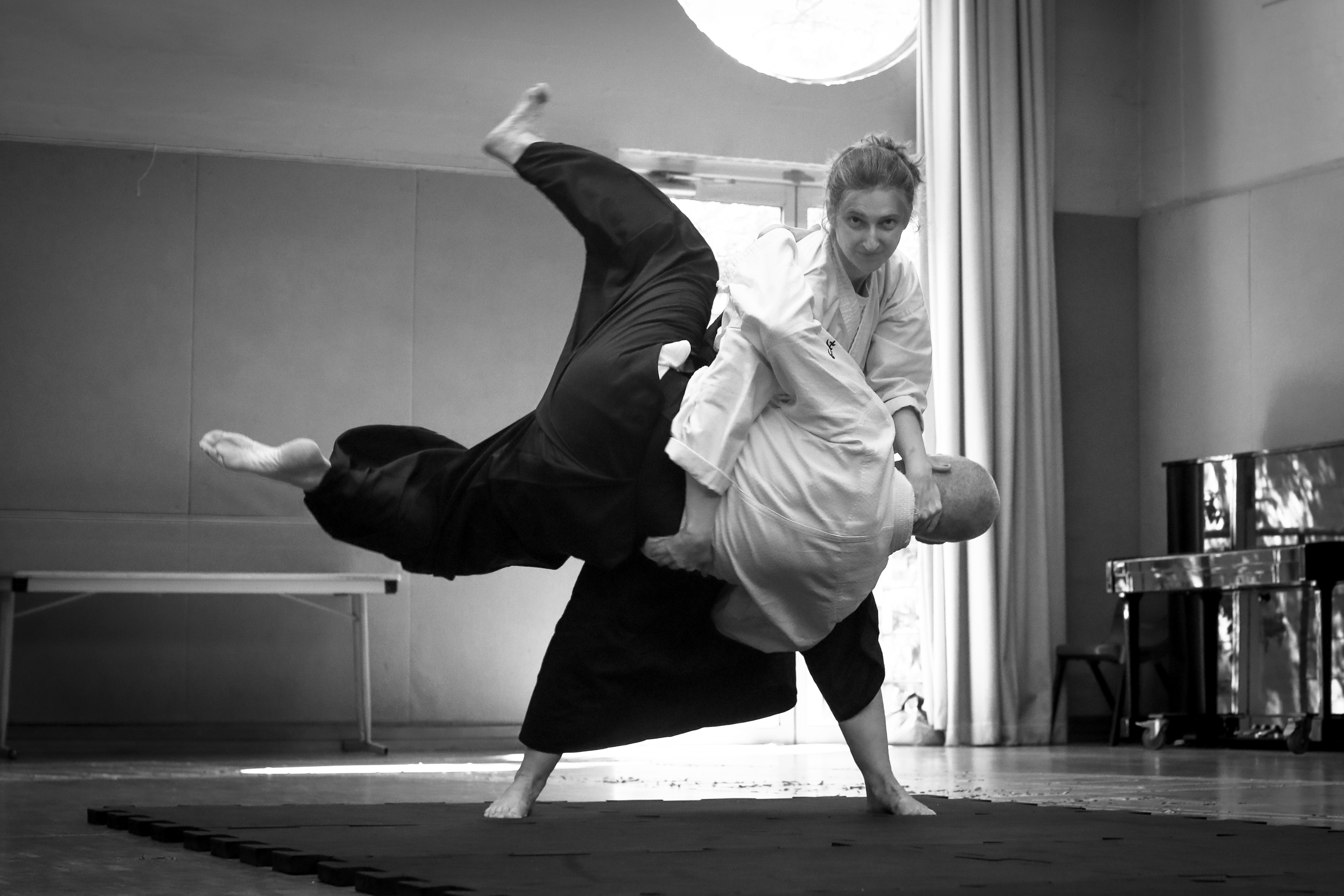Three Pillars of Aikido Yuishinkai
A few months ago we learnt that Michael Williams Sensei was stepping down in many of the roles within Aikido Yuishinkai, though he remains our international chief instructor. In Australia, Williams Sensei has always been there at the front leading our aikido practice, and so the news was quite a shock, though on reflection perhaps not totally unexpected. Aikido isn’t just his day job, its his life’s work and hobby, retirement at some stage for at least the former roles was inevitable. Reading Sensei’s biography of achievements reveals just what is possible for someone of talent, with a trail blazing attitude, together with dedication and determination to see it through.
After bringing Ki Aikido to Australia in little over 20 years he created a large organisation down the east coast of Australia. In the early 2000’s, as Maruyama Sensei’s ‘younger brother’ he then went on to build Aikido Yuishinkai both nationally as well as an international organisation of over a hundred dojo. He developed video and printed resources, together with a light weight structure for those tired of ‘power based’ aikido organisations and who were attracted to Maruyama Sensei’s aikido.
To this organisation he brought a culture of informality, based on building relationships, and established, largely by example, what I think are three pillars of Aikido Yuishinkai : Unity through diversity, Excellence through continued learning and Seeking the source through lineage to the founder and the roots of aikido before him.
1. Unity through diversity
Aikido Yuishinkai is a broad church, whilst many have come from a background in Ki Society yet others have come from other places in the Aiki world including former independents and those from more stablished aikido organisations. All have been attracted to the light yoke of Aikido Yuishinkai which seeks not to force change but encourage it, as we follow the principles of the school through Maruyama Sensei’s aikido. Our syllabbus is a mix of very precise basics – dissappearing at 1st Kyu to free form movements and the 5 levels (Kotai through Kontai) to guide the path. Williams Sensei has also been active in the wider Budo community personally and later drawing in influences into our organisations, publically these have including arts such as Judo (the Ota’s in the 90’s), Karate (Stan Schmidt) and others which have helped inform our art and embrace the wider vision. More recently we saw the aikido friendship seminar in Japan in 2010, where he was presented with his 10th dan.
2. Excellence through learning
Whether in the Ki Society or Aikido Yuishinkai, Williams sensei has been travelling to Japan, Hawaii, UK to seek out teachers as well as bringing out many teachers to Australia from Japan, Hawaii (the birth place of Aikido in the West) so that we might learn from many sources and gain an appreciation of the wider context of Aikido. These included something of the true swordsman and samurai of old, direct students of the founder as well as seminars focused on just particular aspects of our art, such as on the development of Ukemi, and teachers from other arts as well. All were designed to stretch our understanding of the art and the boundaries of what we considered to be our art and to help us maintain beginners mind. Its exciting to see this continue in Aikido Yuishinkai, with windows into the very foundations of aikido such as the Daito Ryu, Shinkage Ryu sword school and the healing arts of Soutai
3. Lineage to the founder
As Aikido moves into its 3rd generation, many of us, through Sensei’s efforts have had the opportunity to learn directly from several students of O’Sensei, the founder of Aikido. These include the trips to Japan he organised, together with the steady stream of seminars he hosted. More recently the opportunity to follow Maruyama Sensei in such a direct way is a stunning achievement, firmly grounding our art in the past yet looking to the future as he takes Aikido Yuishinkai forward.
On a personal note its been a joy to have Williams Sensei as mentor and sensei throughout my aikido journey thus far, (despite the rocky beginnings of a wayward physicist with funny views on ‘Ki’ ) sensei has delivered an authentic art and stood by me as I learnt, as well as in times of trouble when many others ran the other way or just shrugged their shoulders in indifference. The three pillars are, I think, a fantastic legacy and compass for the future.
Moving forward, sadly, I remember well the fracturing of the previous organisation, as at times dojo vied dojo for opportunities, with some lost to independence and others choosing to go in other directions. I hope as the aikido in this country continues to develop that ideas like the three pillars are incalcated in our respective dojo and seniors this time around can help us to help each other to continue to develop our aikido, learn from each other and seek the source of Aiki both within and without our respective traditions.
While this is just a personal observation and idea, three pillars of Aikido Yuishinkai resonates strongly as a learned legacy from Williams Sensei as we look to the future.
1. Unity through diversity,
2. Excellence through continued learning
3. Seeking the source


2 comments for “Three Pillars of Aikido Yuishinkai”